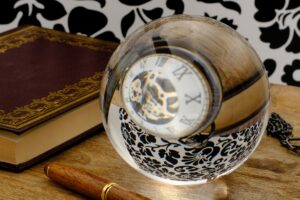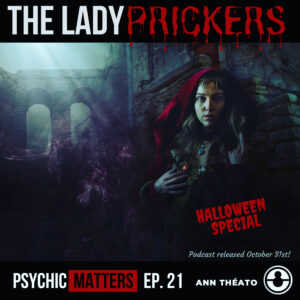The art of medicine consists in amusing the patient whilst nature cures the disease.
~ Voltaire
Respect Your Elders
~ the medicine chest of the country people
My doctor is a tree. An Elder tree to be precise. Trot down to you nearest green space, hunt about for the common Elder tree and you may avoid a winter visit to your GP.
MEDICINE CHEST
Medicinally every part of the tree is used – berries, flowers, leaves, bark, pith and roots to cure a variety of ailments such as epilepsy, asthma, inflammation of the eyes, sore throats and bruises. No wonder it has been termed the ‘Medicine Chest of the Country People’.
The Dutch physician Boerhaave reportedly never passed an Elder without raising his hat, in deference to its medicinal qualities.
An Elderflower decoction makes a good anti-inflammatory mouthwash or gargle for swollen painful gums and sore throats. The flowers are used in skin washes to improve the complexion. Elderflowers in a small muslin bag and placed in water were used to soften and whiten the skin, to clear freckles and to relieve sunburn, eczema, acne and psoriasis.
The flowers and berries are used to make wine and teas and even vinegars with many healthful benefits. Elderberry juice often banishes the pain of sciatica.
MYTH, SUPERSTITION & FOLKLORE
Historically the Elder is surrounded by myth, superstition and folklore. Country folk were frightened to prune it, for fear of being pursued by ill-luck and would always ask permission from the tree. An old custom among gypsies forbade them using the wood to kindle their camp fires. Gleaners of firewood would look carefully through the faggots lest a stick of Elder should have found its way into the bundle.
In England the tree would be cultivated near cottages for protection against witches. Often green Elder branches were buried in a grave, to protect the dead from evil spirits & witches.
In some parts of England, it was a custom for the driver of the hearse to carry a whip made of Elder wood.
Russians believed Elder trees drove away evil spirits. Sicilians believed sticks of its wood would kill serpents and drive away robbers. Serbs believed a stick of Elder at a wedding brought good luck and in Denmark the Elder was connected with magic. The Danes believed that if the tree was cut down, “Hylde-Moer” the dryad who lived in the tree, would follow her property and haunt the owners.
There is a medieval belief – mentioned by Shakespeare in Love’s Labour’s Lost – that Judas was hanged on the Elder and the tree became an emblem of sorrow and death. Although it is hard to believe a man could be hanged on such a small bush, it is interesting that a fungus called “Jews Ears” grows almost exclusively on the Elder. This fungus has become a famous medicine for curing throat infections.
INSECT REPELLENT
Elder leaves have an unpleasant odour offensive to most insects and if you bruise the leaves and either wear them in your hat or rub them on your face, they are an effective mosquito deterrent. Take it a step further and make up a decoction from the leaves. You can then spray this on plants to keep off attacks of aphids.
The roots are insecticidal – badgers rub their bodies vigorously against them to kill lice infestations in their fur. It is possible that a decoction used topically might help to eradicate an infestation of head lice.
Carl Linnaeus (18thcentury) one of our forefathers in modern ecology, observed that sheep & cows eat Elder leaves but that horses & goats refuse it. Seemingly, if sheep suffering from foot rot can get at the bark and young shoots they will cure themselves, although Linnaeus did also say that the berries have a serious ill-effect on chickens and that the flowers are fatal to turkeys and peacocks.
The whole tree has a narcotic smell and no plant will grow in its shadow. Elders are common in woods and waste places because the seeds germinate easily. Seedlings spread quickly, as they are not eaten by rabbits or other small animals.
ANTIVIRAL ACTION
In 1990, Bulgarian scientists found that Elderflowers had antiviral action against herpes simplex type 1 (the virus responsible for causing cold sores). Recent clinical evidence from Israel shows Elderberry extract effectively inhibiting various strains of flu virus.
Back in the UK, the Elder still keeps its place in the British Pharmacopoeia and for centuries, Elderberry Rob (a vegetable juice thickened by heat) taken hot with sugar has been a well-established cure for the common cold.
It is only in recent years that science has proven that Elderberries furnish Viburnic acid, which induces perspiration and is especially useful in cases of bronchitis.
BYGONE DAYS
Elderflower ointment was largely used for wounded horses during the War – the Blue Cross made a special appeal for supplies. Farmers in bygone days have used the leaves both to drive mice away from granaries and to boil up with linseed oil for application to bruises, chilblains and apparently, piles. An old writer tells us, “There be nothing more excellent to ease the pains of the haemorrhoids than a fomentation made of the flowers of the Elder and Honeysuckle in water for a short time. It easeth the greatest pain.”
PIPE TREE
The word Elder comes from the Anglo Saxon word Aeld which meant ‘fire’. The soft pith in the branches pushes out easily and the resulting tubes were used as bellows. Ancient Greeks used the branches to make musical pipes and the Elder was often referred to as a pipe tree or bour tree. Because the pith is so easily removed from the stems, it has been used from the times of the Ancient Greeks to make musical pipes; cottagers used the hollow stems as bellows, the hollowed out Elder branch was then perfect for making small flutes similar in nature to Pan flutes (the Latin name Sambucusis a derivation of a Greek word that signified a wind instrument made from Elder). Hailing from the honeysuckle family, its Latin name is Sambucas Nigraand Sambuca is Greek for musical instrument.
HAIR DYE
Bark of older branches and root used for black dye, leaves yield green dye, berries blue & purple dye. The Romans made use of the Elderberry juice as a hair-dye and Culpeper tells us that ‘the hair of the head washed with the berries boiled in wine is made black’.
HOW TO MAKE ELDERBERRY ROB
Elderberry Rob (Rob is the old name for Cordial)
1 lb (450g) fresh crushed Elderberries
1 lb (450g) brown sugar
Simmer together until the consistency of syrup. Pass through a fine sieve and then bottle. One or two tablespoons in a mug of hot water taken at the onset of a cold is wonderfully healing. I find a dash of homemade raspberry brandy gives it wings!
DISCLAIMER: This article is not intended to be a substitute for medical care or the expert diagnosis of a trusted physician




